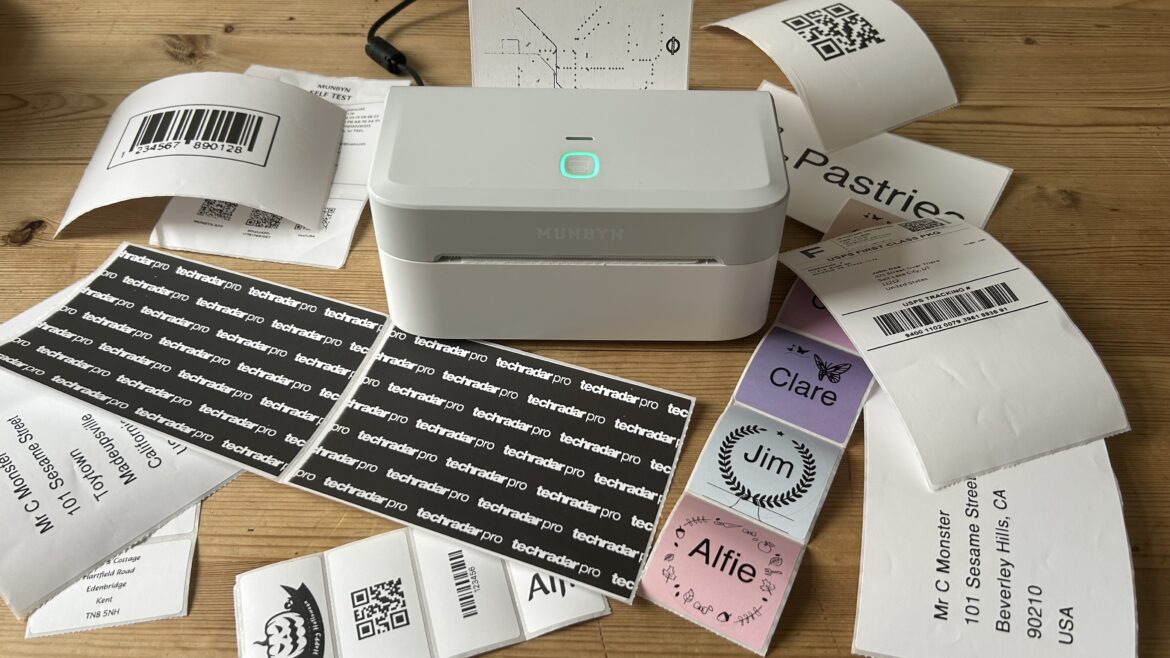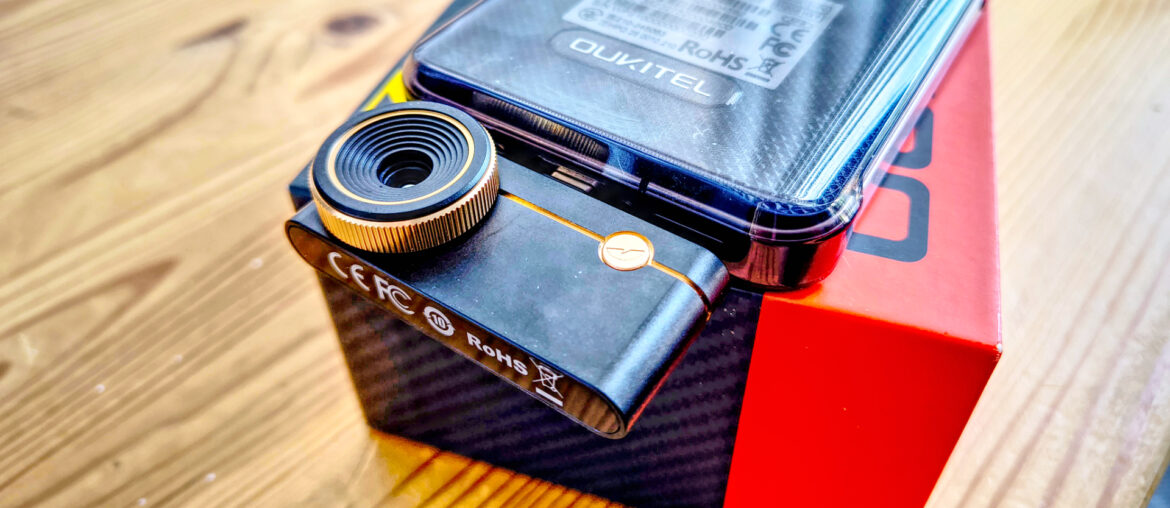Why you can trust TechRadar
We spend hours testing every product or service we review, so you can be sure you’re buying the best. Find out more about how we test.
Specs
Type: thermal label printer
Functions: print only
Connectivity: Bluetooth
Max print speed: 72 labels/min
Max paper size: 4-inch
Print quality: 203 dpi
Apple AirPrint: no
Consumables included: 20 4×6-inch labels
Dimensions: 7.28 x 3.54 x 3.66 in / 185 x 90 x 93 mm (WxDxH)
Weight: 1.68lb / 766g
If you’re still printing stickers and labels with an inkjet or laser, you really should try a dedicated thermal label printer. Their inkless technology allows them to be smaller, simpler, lower maintenance devices that will never run dry on you. They work by heating special thermal paper, a reliable and efficient process that’s become the first choice for e-commerce, logistics and storage industries.
The good news is, that demand has led to lots of great label printers becoming widely available at competitive prices. The Munbyn RealWriter 403B (also billed as the RW403B) being one of the best examples I could find.
Like all of Munbyn’s best label printers, this one is a desktop labeller and it’s aimed at any small businesses looking to print large volumes of shipping labels, price tags or other professional-looking stickers. I think it’ll also interest home users as it comes with software that makes it fun to produce decorative labels for gift-wrapping and the like.
But first, what is a thermal printer? Follow that link for a full answer, but in a nutshell, its a device that creates imprints by causing a very local reaction between the chemicals contained in thermal paper that turns it black. Thermal media includes rolls of stickers that come in all colors, but you can only print black onto them. I tried a variety of label sizes to assess the The Munbyn RealWriter 403B and on the whole, I’m delighted by the results.
- Munbyn RealWriter 403B at Amazon for $79.98
Munbyn RealWriter 403B: Design and build
Image 1 of 2
(Image credit: Munbyn // Future)(Image credit: Munbyn // Future)
While the Munbyn RealWriter 403B is small enough to be carried around, it’s very much a desktop label printer rather than a portable handheld labeller, like the Brother P-touch CUBE PT-P300BT, for example. It runs on mains power, not battery and it’s reassuringly heavy at 1.6lb.
According to Munbyn, its metal components and robust build give it a lifespan of up to 970,000 labels, which is apparently six times longer than rival printers. I can’t put that to the test, but it certainly feels well made. The hinged body closes with a satisfying clunk to grip your label reel securely. There are only three buttons – eject, paper feed and power – and none them look likely to fail any time soon.
Munbyn RealWriter 403B: Features & specifications
Image 1 of 2
(Image credit: Munbyn // Future)(Image credit: Munbyn // Future)
The Munbyn RealWriter 403B can only make black imprints on thermal paper, but it’s quite flexible about the thermal media it can handle. You can feed large 6 x 4inch labels or little 1.6 x 1.2inch labels and anything in between. These sticky labels come in many shapes and colors too.
The print resolution is 203dpi and print speed is given as 72 labels per minute. Bluetooth connectivity is built in and there’s a USB C port for connecting to a phone or PC via data cable. It’s supported by the Munbyn Print app (iOS/Android) or Munbyn Editor (Chrome), which gives you access to more than 3,500 design elements and 80+ fonts.
You get twenty 4x6inch shipping labels in the box, but if you pay a little more for one of the Munbyn RealWriter 403B kits, you get additional labels and a roll dispenser included.
Munbyn RealWriter 403B: Setup and operation
Image 1 of 2
(Image credit: Munbyn // Future)(Image credit: Munbyn // Future)
Setting up the Munbyn RealWriter 403B involves nothing more than plugging in, turning on and loading some labels. Download the supporting app to your iOS or Chrome device and the software will help you connect with the printer and start printing.
I found that it joined quickly and I was printing labels within ten minutes of opening the box. The only potential for messing up is when loading your rolls of stickers. Munbyn says that its printer will auto calibrate to avoid misalignment, and it does for the most part, but if you don’t line up your roll of stickers sensibly, they can cause a paper jam, as I found with my first deliberately careless attempt. With no inbuilt roll holder, you need to place the real where it can unroll without getting tangled.
Munbyn’s free software makes it fairly easy to design and print a custom label. With over 2,000 templates and 3,500 graphics to choose from, there’s enough within the app to to complete most labelling jobs. It’s a quick way to create name tags, stickers and personalized labels, once you’ve used the software a couple of times.
Munbyn RealWriter 403B: Performance
(Image credit: Munbyn // Future)
The Munbyn RealWriter 403B printed reliably and quickly and very quietly too. I had no misprints or jams during the test and was pretty pleased overall with the results. I used four types of paper ranging in size, shape and color – this label printer is not fussy about media – and it always applied my design in exactly the right place.
The large 6×4 inch stickers are an ideal size for parcel labels and the print quality is good enough for barcodes and QR codes to be scanned and accurately read. I expect that printing postage labels at home is what this printer will be primarily used for.
It’s worth remembering that, despite the desktop dimensions, this is only a label printer and that the resolution is limited to 203dpi. Try printing more complicated images onto a large sticker, like the London Underground schematic, and the result is unreadable. When printing simple graphics like those provided by the Munbyn print app, and you’re rewarded with pleasingly dark and crisp prints. Look at the name tags I printed as an example of how sharp the graphics can appear.
Munbyn RealWriter 403B: Consumables
(Image credit: Munbyn // Future)
The beauty of thermal printing is the absence of ink or toner, so your only consumables cost is the thermal media. Direct thermal labels use chemically-treated paper that turns black when heated by the printer head and naturally they’re more expensive than regular sticky labels.
A pack of 500 fan-fold shipping labels costs US$27 (currently reduced to US$22.67) on Munbyn’s US website. Shop around and you’ll find cheaper third party labels. Munbyn has included twenty labels in the box to get you started.
Munbyn RealWriter 403B: Maintenance
With no messy printheads and few moving parts, thermal printers are very low maintenance machines that should last a long time. Munbyn reckons its professional-grade engineering means it lasts six times longer than rivals and is good for at least 970,000 labels.
Munbyn RealWriter 403B: Final verdict
As a desktop thermal label printer, the Munbyn RealWriter 403B performed very well in all my tests.
Firstly, it’s easy to set up and operate, provided you feed your reels of stickers in sensibly. You might want to add the optional roll holder accessory to ensure this.
Secondly, it’s good quality. The robust design feels like it’s built to last and the print quality is better than most label printers, although I’d like to see the resolution boosted from 203dpi to 300dpi in the next generation.
Thirdly, it’s pretty good value. After your initial outlay, there’s no ink cost to think about and thermal labels can be bought inexpensively. Compared to using a regular inkjet to print labels, the Munbyn RealWriter 403B is quicker, more reliable and more fun.
For more, I’ve tested out the best home printers and the best small business printers.
Munbyn RealWriter 403B: Price Comparison


